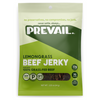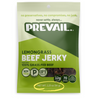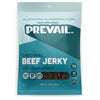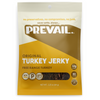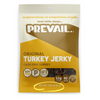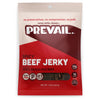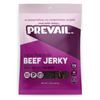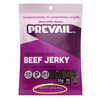Top 8 Allergens: The Most Common Foods That Cause Reactions

Allergies can be a serious problem. And while they may not always be fatal, they can still lead to life-threatening reactions and hospitalizations. Allergens that we encounter on a daily basis are usually just "annoying" allergies such as hay fever or food sensitivity.
But some of us have more severe allergic reactions such as anaphylaxis which is triggered by certain foods like peanuts, seafood, milk, eggs, and tree nuts. This article will talk about the top 8 food allergens in food and how you can avoid them.
What Are Food Allergens, And How Do They Happen?
Food allergens are proteins that can cause an allergic reaction in our bodies. Here is how it happens: First, the body mistakes these proteins as harmful invaders, then it sends out an immune system response to neutralize these proteins. This response causes symptoms like rash, swelling, vomiting, and diarrhea.
The Top 8 Food Allergens

Below you will find a list of the eight major food allergens:
Milk
Milk is a major food allergen. And most people are aware that they have a milk allergy compared to, let's say, a peanut or shellfish allergy.
Milk allergies happen when our bodies can't process the casein, which is the protein found in milk. Common symptoms of milk allergies include diarrhea, vomiting, and skin rashes.
Shellfish
This group includes shrimp, lobster, clams, and scallops, just to name a few! Shellfish is another type of seafood people often find themselves having an allergy towards if their body can't properly digest it.
A protein called tropomyosin in crustaceans like shrimp triggers allergic reactions when consumed.
Common symptoms of shellfish allergies include trouble breathing, stomach cramps, and vomiting. Some people may even experience an itchy throat or tongue!
Peanuts
Peanut allergy is the most prevalent food allergy among children under 18 years of age and the second-most common food allergy in people over eighteen. Peanut allergies are generally lifelong, with only around 20% of children outgrowing them over time.
When a person with a peanut allergy is exposed to peanuts, the proteins in the peanuts bind to their own IgE antibodies. Subsequent exposure to peanut protein, usually through mouth ingestion, activates the immune system, resulting in allergic reactions that can be minor or severe.
Wheat

Wheat allergies are among the most common childhood food allergies in Europe and North America. Most people diagnosed with a wheat allergy will also be allergic to related grass pollens such as timothy grass or ryegrass pollen, so many sufferers refer to their condition as "wheat/grass" allergies or "wheat/grass" hay fever.
People with a wheat allergy may not necessarily have a gluten intolerance or celiac disease, but they can experience similar symptoms if they eat something containing wheat. Again this is because of the protein in the food, which triggers an immune system response and leads to allergic reactions like stomach cramps, diarrhea, and vomiting.
Tree Nuts
These are a group of foods that usually grow on trees and include pecans, pistachios, walnuts, and cashews, to name but a few! Tree nuts don't only come from tree trunks, though - they also grow in bushes like hazelnut or berries like acai.
People with a tree nut allergy are usually allergic to more than one type of nut. They can experience symptoms like swelling of the lips, tongue, and throat, difficulty breathing, nausea, and vomiting.
Eggs
It's not just adults who can have egg allergies! In fact, around one in every seventy-five children are allergic to eggs. This allergy is usually outgrown by the time a person reaches sixteen years of age.
When someone with an egg allergy consumes anything that contains eggs, their body mistakes the proteins in the eggs for a harmful invader and sends out the immune system to attack. This can cause symptoms like nausea, vomiting, stomach cramps, and diarrhea.
Soy
Soy allergies are another type of food allergy that can affect people of any age. Soy is a plant-based protein and is found in many different types of foods like tofu, soy sauce, tempeh, and miso.
People with soy allergies usually experience the same symptoms as those with milk or egg allergies when they eat soy products.
Soy possesses up to 28 proteins that can trigger an immune system response, leading to allergic reactions like stomach cramps and vomiting.
Fish

Fish allergies are the third most common type of seafood allergy and can be either a lifelong allergy or one that develops later in life.
People with fish allergies usually experience symptoms like swelling of the lips, tongue, and throat, difficulty breathing, nausea, and vomiting. This is because there's a protein in fish called Parvalbumin which also triggers allergic reactions when consumed by some people.
Food Allergy Symptoms
Symptoms usually happen within minutes to a couple of hours after eating the food, but in some cases, they can take up to 48 hours to show up.
How To Prevent Food Allergies
The best way to prevent food allergies is to identify and understand what foods cause them. Once you know which foods trigger your allergy, you can easily avoid them. Here are some tips for doing that:
- Read food allergen labeling carefully. Look for words like "wheat," "milk," "eggs," and other common allergens. The ingredients list will tell you exactly what's in the product.
- If you're eating out, ask the restaurant staff about the ingredients in their dishes. Many places are happy to accommodate food allergies.
- Bring your own snacks with you when you travel or go on vacation. This way, you'll know exactly what's in them, and you can avoid any allergens.
The bottom line is that if you have a food allergy, it's essential to be aware of the top eight allergens and how to avoid them. By following these tips, you can keep yourself safe and healthy!
Why We Care About What You Eat
To help you understand why we are so health conscious about our jerky, we have to take you back. Way back to before our founder, Ashley, was diagnosed with Celiac disease in 2004.
Ever since she was a teenager, Ashley has experienced endless strings of allergy flare-ups. This made life and eating difficult. Ashley also found it hard to eat various snacks, including delicious treats like jerky! So she sought out ways to eat healthy while also not giving up on the taste of mouth-watering snacks.
Eventually, this led Ashley and her husband, Glen, to create a healthy allergen-free recipe for beef jerky. And thus, PREVAIL jerky was born. Here are some reasons why our beef jerky remains the best option for anyone who has allergies:
- Our jerky doesn't contain any of the top 8 food allergens.
- PREVAIL jerky is made with marinades & spices that are 100% organic and made with 100% grass-fed, grass-finished non-GMO beef.
- All of our jerky is made locally in Springfield, IL. Our product is the first product run in the morning after the strict HACCP level cleaning the night before to ensure that there is no cross-contamination.
- We use coconut sugar and salts to help cure the meat and then smoke it with Cherry Wood to naturally preserve it (the natural smoke also happens to add tons of flavor). So this means our jerky is free from preservatives and additives!
- Our jerky is certified gluten-free with The Gluten-Free Manufacturing Program (GFMP), endorsed by the National Celiac Association.
Conclusion
If you have a food allergy, it's important to be aware of the top eight allergens and how to avoid them. By following these tips, you can keep yourself safe and healthy!
To recap:
- There are eight major food allergens: milk, eggs, peanuts, tree nuts, soybeans, wheat, fish, and shellfish.
- Food allergy symptoms usually happen within minutes to a couple of hours after eating the food.
- The best way to prevent food allergies is by knowing what they are and avoiding the foods that trigger them.
For more information on our beef jerky, check out our store!


